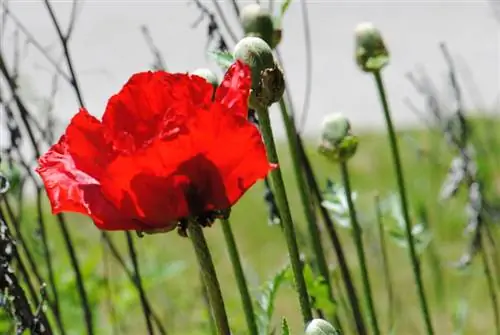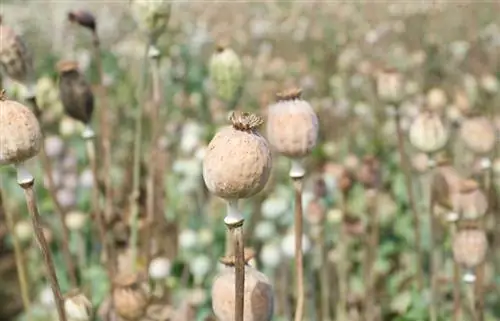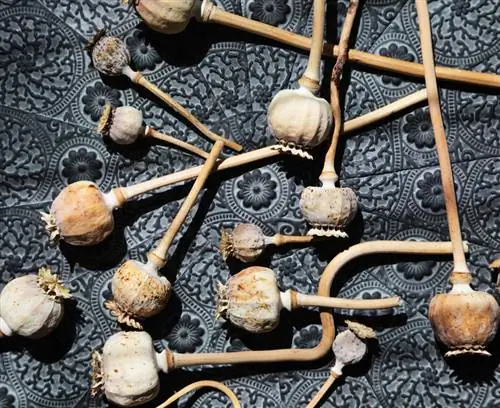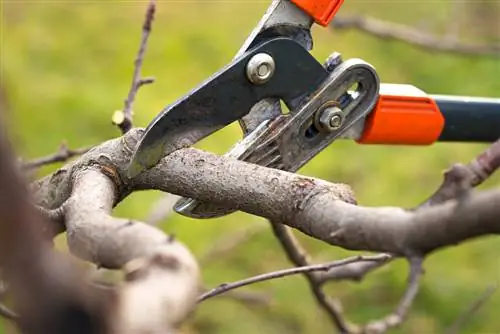- Author admin [email protected].
- Public 2023-12-16 16:46.
- Last modified 2025-01-23 11:20.
It grew into a magnificent perennial within just a few weeks. Now it is blooming cheerfully and almost takes your breath away with its large flowers. Does it need a cut afterwards or under what circumstances should it be cut?
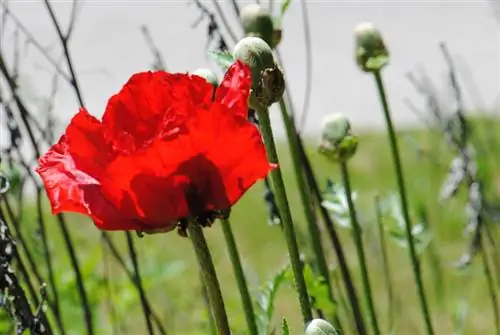
Is pruning necessary for Turkish poppies?
Should you cut a Turkish poppy? In principle, pruning is not absolutely necessary as the plant will decline on its own after the flowering period. However, if necessary, the perennial can be cut to remove old flower stalks or sort out diseased shoots.
A Turkish poppy does not need pruning
In the course of care, a Turkish poppy does not necessarily need pruning. When his time comes, he will withdraw on his own. This usually happens right after flowering, around July. Its leaves wither and the perennial becomes almost invisible on the surface.
A pruning is tolerated
Basically you can cut your Turkish poppy. This should be noted:
- cut away old flower stems after flowering (if seed formation is undesirable)
- If necessary, only remove the leaves in autumn when they have yellowed
- Perennial can be cut back to 10 cm above the ground
- don't cut too late in autumn - new leaves will sprout
- if applicable Also remove any existing supports at the same time
Cut when diseased
Wetness weakens the Turkish poppy enormously. As a result, fungal diseases often occur. As soon as you identify infected shoots, you should cut them off and dispose of them safely. Blackish leaves also indicate a disease - bacterial blight. The entire plant should be disposed of here. She can no longer be helped.
Use the Turkish poppy as a cut flower
In contrast to the native corn poppy, the Turkish poppy is wonderful as a cut flower (they lose so quickly). If you want to use it as a cut flower, you should cut the flowers when the buds are closed but ready to open slowly. Early morning is best for cutting. The cut flowers can be stored in the vase for up to 3 weeks.
Cut off the fruit heads with the seeds
In the course of propagation, you can wait until the seed capsules have formed. When they are dry and rustle, you can cut them off and remove the fine seeds. They can be sown in autumn.
Tip
After cutting, you can cover your Turkish poppy with brushwood or wood shavings in the fall to protect it from severe frost.

